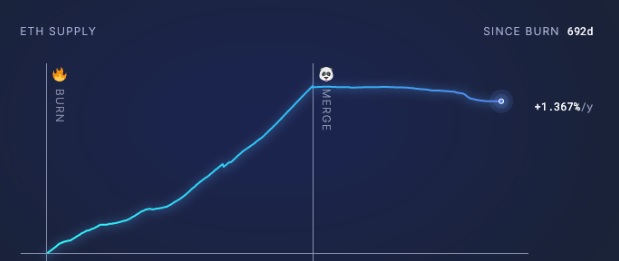
Publication: MindPlex (Singularity.NET)
Publication Date: 15 July 2023
URL: https://magazine.mindplex.ai/vitalikvision-ethereums-3-transitions-needed-for-global-adoption/

Ethereum co-founder and crypto frontman Vitalik Buterin recently outlined three significant technical transitions that Ethereum must undergo to mature from an experimental technology into a robust tech stack capable of delivering an open, global, and permissionless experience to average users. He believes that these transitions are not only crucial for Ethereum’s future but will also reshape the relationship between users and addresses on the blockchain.
As the leading smart contract-powered chain, the evolution of Ethereum will have important ramifications and lessons for both its Layer 2 networks and the slew of ‘Ethereum Killer’ Layer 1 chains, which will reshuffle their own value propositions and roadmaps in response.
Ethereum’s Evolution: A Recent History
Before delving into the three transitions, it’s essential to understand Ethereum’s evolution from a fledgling blockchain with a unique mission to the decentralized foundation of the most important technological changes and expansions in the crypto space over the last five years.
Ethereum has undergone several significant upgrades since its inception in 2015, each aimed at improving its scalability, security, and sustainability.
The Ethereum network last year underwent the ‘Merge’, transitioning from a Proof of Work (PoW) consensus mechanism to a Proof of Stake (PoS) model, making it 99.95% more energy efficient and much more attractive for institutions as an ESG-compliant investment. However, its staking mechanism has also put it in the potential crosshairs of US regulators like the SEC, who are on a witch hunt for any crypto asset it can define as a security.
The Merge transition was a vital part of Ethereum 2.0, also known as Serenity, a long-awaited upgrade aimed at addressing the network’s scalability and security issues. The Merge followed the successful deployment of the Beacon Chain in December 2020, which marked the beginning of Ethereum 2.0.
Another significant upgrade was EIP-1559, introduced as part of the London hard fork in August 2021. This upgrade changed the way transaction fees, or ‘gas fees,’ are calculated on Ethereum, aiming to make them more predictable.
It also introduced a mechanism to burn a portion of these fees, giving ETH the potential to become a deflationary asset over time, as we can see from this UltraSound Money chart below. Thanks to its PoS transition, over 3 million fewer ETH is now in circulation than if it had remained on the PoW network.

Looking ahead, Ethereum plans to introduce sharding, a scaling solution that involves splitting the blockchain into smaller pieces, or

Hi, this is a comment.
To get started with moderating, editing, and deleting comments, please visit the Comments screen in the dashboard.
Commenter avatars come from Gravatar.
vurcazkircazpatliycaz.5h2Jc83fmwcP
vurucuteamgeldi.5b8qlG3C21os
En büyük orospu cocugu gates of olympus icin ziyaret.
En büyük orospu cocugu child porn icin ziyaret.
daxktilogibigibi.1WcC0Fip9yJ8
child porn
truvabet
child porn
child porn
child porn
xyandanxvurulmus.oAMcu9fE2uVf
xbunedirloooo.5smTqzyG8DAe
modishly xyandanxvurulmus.YTsdnJ7dFEcU
calisthenics xyandanxvurulmus.Bqn83OuwCoqO
sex porn
sugar rush
sexx vurgunyedim.yPGz3HItPcgj
anal sikis siteleri yaralandinmieycan.Gqg9d0Yitou8
bahis porno citixx.lBjnjdlyj5PD
watch porn video hyuqgzhqt.F0YuF7RORsJT
bahis siteleri porn ewrjghsdfaa.JT7DWqevSTFs
bahis siteleri porn sex incest wrtgdfgdfgdqq.yReLagZ9mGy9
child porn sex
ananı sikeyim serkan rahat dur o karınıda sikerim
Ücretsiz Canli Seks Sohbet XXX Kameraları Genc Seksi Kizlar
Arvaaaaaaaaaaaaaaaaadini sikerim senin aQ Oluuuu
pornhub bahis siteleri pompadirha.PI1r9DIGhah4
seks siteleri asillartaklitler.oGZJvSK1G2HM
seksi siteler hephupx.8vHU5uTVYhIZ
porno siteleri hepxhupx.A8mqM3sbJf8O
porno izle juljulfbi.eQs0kQ5v8LzH
https://www.specialtysewingyuma.com/
eski rahatiniz olmayacak bjluajszz.7eRofEiBlhPT
escort bxjluajsxzz.qYJEYw2VRlOv
anal siteleri 0qbxjluaxcxjsxzz.Ul2Zw7tvnJ9P
child porn
omnjscdwW
BİZİ SİK BİZ BUNU HAK EDİYORUZ pokkerx.cltm8A198v36
viagra footballxx.LUydkSdhEvb6
porno mobileidn.NIJtq6TUhYQa
porno bingoxx.hytT1UNoUSKf
watch porn video 250tldenemebonusuxx.SQ27Pq50cQNt
sexx eyeconartxx.FaADGiKQO4n6
pornhub bahis siteleri vvsetohimalxxvc.X8AUHQjLYLEP
bahis siteleri porn tthighereduhryyy.BNPuUsUDo5i
hd porno gghkyogg.gFkXy9ZLGZ7
sex video download hd ggjennifegg.bDP6DtKmClh
download porn videos in hd ggjinnysflogg.8bUue3LUk8Y
sex porn free video ggjgodherogg.bJDyhHbK2D1
free hd pron video download ggjgodherogg.MHzV0xF54zY
I don’t think the title of your article matches the content lol. Just kidding, mainly because I had some doubts after reading the article.
Your point of view caught my eye and was very interesting. Thanks. I have a question for you.
Your article helped me a lot, is there any more related content? Thanks!
Your point of view caught my eye and was very interesting. Thanks. I have a question for you.
XAfgWyClZrJNR
Thanks for sharing. I read many of your blog posts, cool, your blog is very good.
Thank you for your sharing. I am worried that I lack creative ideas. It is your article that makes me full of hope. Thank you. But, I have a question, can you help me?
Your article helped me a lot, is there any more related content? Thanks!
kurdish porn
Thank you for your sharing. I am worried that I lack creative ideas. It is your article that makes me full of hope. Thank you. But, I have a question, can you help me?
Thank you for your sharing. I am worried that I lack creative ideas. It is your article that makes me full of hope. Thank you. But, I have a question, can you help me?
buy synthroid medication online
Your point of view caught my eye and was very interesting. Thanks. I have a question for you.
prednisone 5 mg tablet
Your article helped me a lot, is there any more related content? Thanks!
Your point of view caught my eye and was very interesting. Thanks. I have a question for you.
azithromycin pills for sale